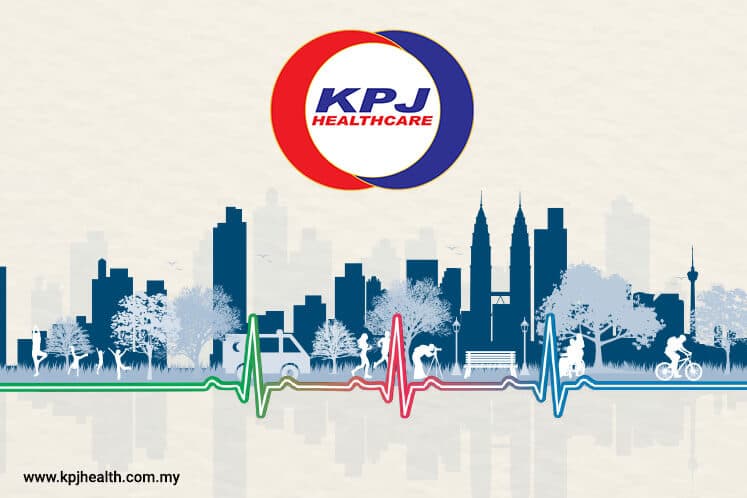
This article first appeared in The Edge Financial Daily on June 18, 2018
KPJ Healthcare Bhd
(June 14, RM1.06)
Downgrade to hold with an unchanged target price (TP) of RM1.07: Considering KPJ Healthcare Bhd’s recent share price surge (+22% since our upgrade), we believe its risk-reward profile is now more balanced. The run-up could be due to increasing market appetite for defensive stocks and the view that KPJ is a potential beneficiary of the switchback to the sales and services tax (SST) regime. That said, the company is trading at its five-year forward mean price-earnings ratio (PER) and its share price is now close to its three-year high.
Seeing that KPJ’s share price has shot up 22% post our upgrade to “buy” in early April, we are now re-examining our investment thesis and risk-reward profile of the stock.
KPJ’s revenue and earnings growth chugged along well in the first quarter of 2018 (1QFY18) (increased 5% to 6% year-on-year [y-o-y]), largely led by its Malaysian operations, which made up more than 95% of its top line. Domestically, the company was firing on all cylinders where: i) the number of inpatients and outpatients grew 4% to 5% y-o-y; ii) fees charged per patient were also higher by around 1% y-o-y; and iii) the occupancy rate rose 1% y-o-y to 69%. Collectively, these aided in Malaysia’s revenue and profit before tax expansion of 6% to 14% y-o-y. That said, other country operations (like Indonesia) were lacklustre, capping KPJ’s overall progress.
KPJ’s Indonesian operations continued to be poor. Revenue dropped 19% y-o-y, dragging its 1QFY18 performance into the red for the second consecutive quarter (from a low base). The competitive environment has led to the number of patients and fees declining 4% to 28% y-o-y at Rumah Sakit Medica Bumi Serpong Damai. Also, the occupancy rate dropped to a low of 37% (declined by 12 percentage points y-o-y). Nevertheless, growing the Indonesian’s presence (via joint ventures) remains a part of KPJ’s regional aspiration despite some short-term pain.
The hospital opening timelines in Bandar Dato’ Onn, Miri and Kuching were all pushed back by one quarter to 3Q18, 2Q19 and 2Q19 respectively; this is not a huge concern as KPJ still has space for inpatients. Separately, Jeta Gardens (a 57%-owned aged care business in Australia, which was acquired in 2010 for RM19 million) is still up for sale. The disposal could free up KPJ’s capital to pare down debts or for reinvestment purposes. In 1Q18, the group’s net gearing stood at 0.7 times (1Q17: 0.8 times).
The new ruling government, Pakatan Harapan, has kept its manifesto promise to switch back to the SST system from the goods and services tax (GST) regime. To recap, the GST partially led to a rise in medical cost as the 6% input tax on drugs under the non-National Essential Medicine List was absorbed by private healthcare providers. According to Willis Towers Watson, Malaysia’s 2016 to 2017 real healthcare inflation shot up by 8% to 9%. That said, medicines were not subject to tax under the previous SST system. Hence, we believe the transition back to the SST has a net positive impact on KPJ.
There’s no change to our forecasts. Key downside risks include: i) market share losses; ii) a delay in hospital openings; and iii) inability to pass on higher operating costs to customers.
KPJ’s share price has shot up 22% since our upgrade in early April. We believe this was due to a combination of the market developing an affinity towards defensive stocks post Malaysia’s 14th general election and the healthcare sector being viewed as a potential beneficiary of the switchback to the SST regime. It is still the cheapest proxy for the healthcare sector in our coverage (28 times PER vs the sector mean of 36 times). As a stand-alone, KPJ is trading at its five-year forward mean PER. However, its share price now is close to its three-year high.
We downgrade our call to “hold” but maintain our TP of RM1.07, based on 28 times 2019 forecast PER. This is in line with its five-year forward mean PER of 28 times, but below the sector’s 36 times. We believe the discount is fair as KPJ has a stretched balance sheet (net gearing of 0.8 times versus the sector’s 0.4 times) and generates an anaemic return on equity (ROE) of 10% versus the sector’s 15%. Similarly, our PER-ROE regression analysis suggests pegging the stock at 26 to 28 times forward PER. Despite our “hold” call, we acknowledge that KPJ still appeals to long-only investors, given that it is blessed with positive structural trends like: i) an ageing population; ii) “lifestyle” diseases; and iii) rising affluence that will continue to support and drive organic growth. The entry level is 90 sen. — UOB Kay Hian, June 14